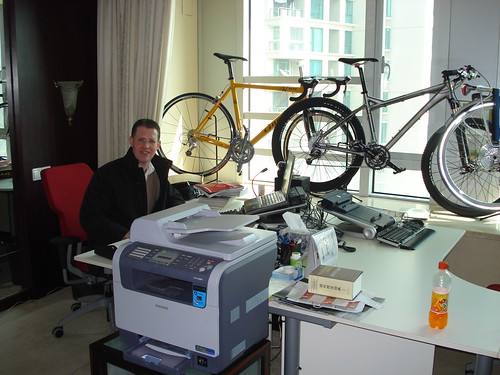Friday, May 8, 2009 – ISSN 1529-1057
Register Now for ITS America’s 2009 Annual Meeting & Exposition, June 1-3, National Harbor, Maryland
Join U.S. Secretary of Transportation Ray LaHood, U.S. Chief Technology Officer-designate Aneesh Chopra, Members of Congress, and other transportation, technology, business and policy leaders at ITS America’s 2009 Annual Meeting & Exposition – located just 15 minutes away from the nation’s capitol. If you are in the transportation industry, you cannot afford to miss this event. ITS America has put together an exciting program of nearly 100 educational and Congressional fact-finding sessions, opportunities to interact with Members of Congress and senior government officials, 150,000 square feet of exhibits, technical tours of local ITS facilities and projects, a “City Streets” technology demonstration staged right outside of the convention center, and a closing reception and technology showcase in the new Capitol Visitors Center. For more information on the program and to register, visit http://www.itsa.org/amregistration.html.
AVIATION
1) Tech, Ops Changes Eyed to Cut Bird Strikes
Link to story in Aviation Week:
http://www.aviationweek.com/aw/generic/story_channel.jsp?channel=comm&id=news/BIRD050709.xml&headline=Tech,%20Ops%20Changes%20Eyed%20To%20Cut%20Bird%20Strikes
2) Wi-Fi Slow to Become Ubiquitous Onboard Airlines
Link to AP story:
http://finance.yahoo.com/news/Wi-Fi-slow-to-become-apf-15189287.html?.v=2
3) Alaska Company Manufactures Safety Technology for Airports
Link to story in the Alaska Journal of Commerce:
http://www.alaskajournal.com/stories/050809/loc_img_local001.shtml
Link to ADS-B Technologies: http://www.ads-b.com/
OTHER
4) Latest Issue of Thinking Highways Online
Link to magazine:
http://www.thinkinghighways.com/#/54 (North American Edition)
http://www.thinkinghighways.com/#/142 (Europe/RoW Edition)
ROADWAYS
5) Google Phenomenon Factor in Border Delays
Map directions lead to delays at Lewiston-Queenston Bridge.
Link to story on WGRZ-TV:
http://www.wgrz.com/news/local/story.aspx?storyid=66530
TRANSIT
6) Chicago Transit: Illinois House Panel OKs Bill to Require Updated Fare System
Link to story in the Chicago Tribune:
http://www.chicagotribune.com/news/local/chi-transit-legis-smartcards-08-may08,0,7249507.story
7) BART Dials Into Phone-Pay System
Link to story in The Examiner:
http://www.sfexaminer.com/local/BART-dials-in-to-phone-pay-system-44573062.html
News Releases
1) Finalists Revealed for Telematics Awards 2009
2) Virginia DOT Launches Interactive Road Construction Map on Web
3) ITS United Kingdom Publishes Intelligent Transport Systems Guides for Local Authority Personnel
Upcoming Events
National Transit Institute Course: Implementing Contactless Fare Collection Systems – May 18-19 – Pittsburgh
https://www.ntionline.com/CourseInfo.asp?CourseNumber=TRI-29
Friday Bonus
In honor of the opening of Star Trek, I present the world’s first car-cloaking device.
http://news.bbc.co.uk/2/hi/uk_news/england/lancashire/8030766.stm
Today in Transportation History
1989 **20th anniversary** – STS-30 landed after successfully deploying the Magellan spacecraft, the first deep-space probe to be launched from a shuttle.
http://science.ksc.nasa.gov/shuttle/missions/sts-30/mission-sts-30.html
=============================================================================================
The Transportation Communications Newsletter is published electronically Monday through Friday.
To subscribe send an e-mail to: TCNL-subscribe@googlegroups.com
To unsubscribe send an e-mail to: TCNL-unsubscribe@googlegroups.com
TCN archives: http://groups.yahoo.com/group/transport-communications
Questions, comments about the TCN? Please write the editor, Bernie Wagenblast at i95berniew@aol.com.
© 2009 Bernie Wagenblast

 The mayor of Copenhagen reckons Biking to Work in that city is as commonplace as brushing one’s teeth. But, as was evidenced by Utah’s plan to make cycling fashionable, much of the rest of the western world is well served by awareness-raising events like Bike to Work week. This week! In the US anyway. (In the UK Bike Week is 13 to 21 June and Australia’s Ride to Work Day is 14 October 2009)
The mayor of Copenhagen reckons Biking to Work in that city is as commonplace as brushing one’s teeth. But, as was evidenced by Utah’s plan to make cycling fashionable, much of the rest of the western world is well served by awareness-raising events like Bike to Work week. This week! In the US anyway. (In the UK Bike Week is 13 to 21 June and Australia’s Ride to Work Day is 14 October 2009)




